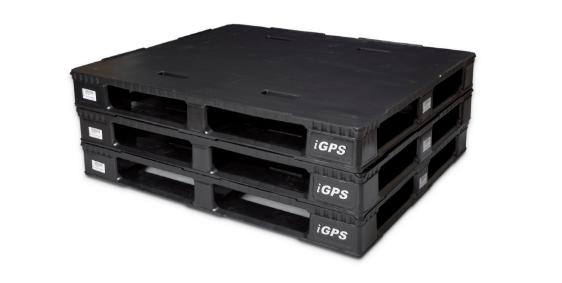If you work in logistics you know how important standardization is. It allows equipment separated by thousands of miles to handle the same materials without difficulty or downtime. Standards across markets are quite literally what make global trade possible. If your company is operating in North America, then you likely use a 48-by-40-inch pallet that conforms to the specifications set by the Grocery Manufacturers Association (GMA). In general, the 48-by-40-inch GMA pallet is the standard in grocery, the U.S. military, and other industries, and adopting it as a shipping platform opens up access to the majority of U.S. supply chains.
However, not all 48-by-40-inch pallets are the same. Pallets that comply with GMA specifications come in types that vary from old-fashioned stringer pallets to reusable block pallets to those made of plastic or even metal. And despite the fact that all 48-by-40-inch GMA pallets are supposedly the exact same size, some pallets do a better job than others of consistently conforming to GMA specifications. This consistent uniformity is crucial for those looking to hone their supply chain efficiency and ensure interoperability between producers, distributors, and retailers throughout the supply chain.
Why Consistent GMA Pallet Dimensions Are Important
Modern supply chains depend on standardized equipment to lift loads that are far too heavy for human muscle power. The process of moving, lifting, and loading pallets by forklift, pallet jack, or automated machinery is repeated thousands of times per day across the supply chain. A perfectly uniform pallet speeds up these operations by offering:
- Consistent Size: A consistently sized, uniform pallet is a dependable constant that supply chain operators can use to precisely plan truck load patterns. Stable dimensions make it easy to calculate the number of pallets that will fit into racks and onto vehicles and freight containers.
- Consistent Weight: Evenly distributed weight is a vital consideration since slight variations in the way weight is distributed on a pallet can change the amount of force the pallet–and the products on it–is subject to. These shifting forces can damage product and pallets, creating a costly interruption in the supply chain, and they may even cause product spillage.
- Efficient Handling: An inconsistently sized pallet can unexpectedly snag and damage machinery with a slightly out-of-true stringer, block, or deck board. A pallet with consistent dimensions and weight, on the other hand, won’t cause unexpected issues during handling. This reduces costly machinery downtime and repair, which is especially important for warehouses utilizing an Automated Storage and Retrieval System (ASRS).
While pallets that are compliant with standard GMA pallet dimensions are available in various materials, some materials are better than others at meeting GMA specifications consistently and maintaining their dimensions and integrity over time.
Uniform, Reliable Pallets With GMA Standard Dimensions
Wood, plastic, and metal are the materials most commonly used to make 48-by-40-inch GMA spec pallets. Of the three, metal pallets are far too expensive to be in common use. They’re reserved for specialty applications where the costs justify the expense, or where there is no alternative. Plastic pallets are gaining attention, but the majority of pallets used in commercial supply chains are still made of wood.
A reusable wood block pallet can vary enormously in weight, from 70 to 80 pounds.
As a material for shipping platforms, wood is less than ideal. Wood’s porousness–which enables the tree to move moisture up the trunk to the leaves while it is alive–makes wood prone to absorbing moisture. As a result, a reusable wood block pallet can vary enormously in weight, from 70 to 80 pounds. This is a serious issue in planning supply chain operations. A load shipped on a wood pallet will never reach the pallet’s maximum weight capacity since it is necessary to leave room for weight variation. For ASRS, which require uniformity to run smoothly, slight variations in weight and size (due to swelling, shrinking, damage, or imperfections in the wood) are even more serious. They may require human intervention to clear debris or repair machinery, hampering a warehouse’ normal operations and resulting in expensive downtime.
Plastic pallets are gaining popularity in large part because they don’t have these issues. As a manufactured product, they conform to exacting standards, with a consistent, evenly distributed weight of less than 50 pounds per plastic pallet. Their integrated construction means that swelling, shrinking, and loose, broken, or warped boards are never an issue.

Despite these advantages, many companies tend to purchase the least expensive wood pallets they can find and stick with them until disaster strikes. This approach just increases a company’s Total Cost of Business (TCOB) over the long-term. Choosing high-quality plastic pallets that are part of a plastic pallet pooling program solves the problem of unreliable and inconsistent wood pallets and takes care of the reverse supply chain needed to return them to production sites.
To lower your Total Cost of Business with the reliable GMA spec iGPS plastic pallet while improving supply chain efficiency and your relationship with retail partners, give our team a call at 1-800-884-0225, email a specialist at switch@igps.net, or visit our contact page.
Image 1: Unsplash Clark Young



